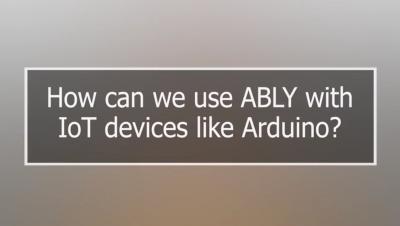Systems | Development | Analytics | API | Testing
Technology
How Is Bugfender Different from Other Tools?
When we think of other products in Bugfender’s space, we don’t really think of competitors; we think of alternatives. Because, being honest, Bugfender doesn’t really have any direct competitors. That sounds like cheesy marketing, right? Yep, we get that. And we don’t say it to be arrogant. We say it because Bugfender was built to provide a unique service in our space. In fact it’s designed to serve the specific needs of our parent company, Mobile Jazz.
How can we use Ably with IoT devices like Audrino?
Top 5 Automated Testing Tools for Android: October 2018
Developers are a fussy bunch. We sweat on the tiniest details and every aspect of our product has to be just right. We don’t like entrusting our precious designs to anyone outside our inner circle. Yet we’re increasing delegating key quality assurance (QA) tasks to robots. The market for automated testing products is expected to be worth $20 billion by 2023 – three times as much as now.
Integrate Data Securely in the Cloud
Best Practices for Building a Cloud Data Lake You Can Trust
Making the Bet on Open Source
Today, Docker or Kubernetes are obvious choices. But, back in 2015, these technologies were just emerging and hoping for massive adoption. How do tech companies make the right open source technology choices early?
Top Devices and OS Versions for Testing iOS and Android Apps in 2018
Realistically speaking, how many times do you redownload an application that’s buggy? Unless it’s a hugely beneficial app, which one might begrudgingly use (off the top of my head, I can’t think of any that aren’t replaceable), users tend to just switch to an alternative app that does the same thing — sans bugs.
The Industrialization of AI
Creating Real-Time Anomaly Detection Pipelines with AWS and Talend Data Streams
Thanks for continuing to read all of our streaming data use cases during my exploration of Talend Data Streams. For the last article of this series, I wanted to walk you through a complete IoT integration scenario using a low consumption device and leveraging only cloud services. In my previous posts, I’ve used a Raspberry Pi and some sensors as my main devices. This single board computer is pretty powerful and you can install a light version of Linux as well.









